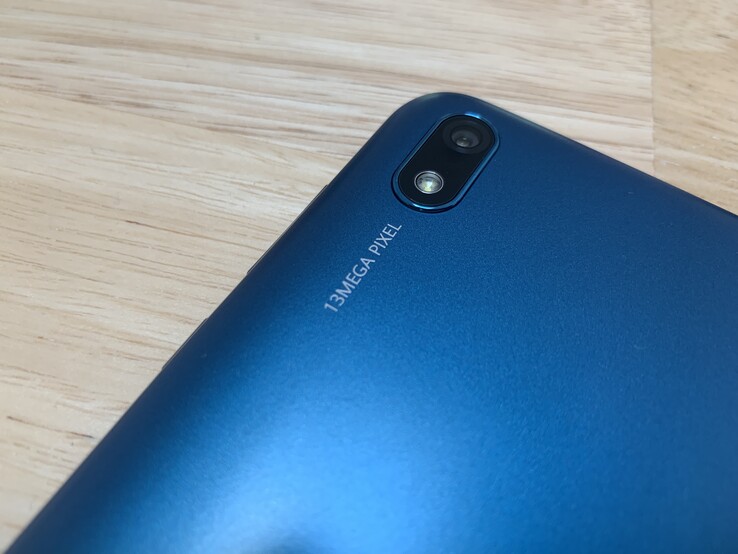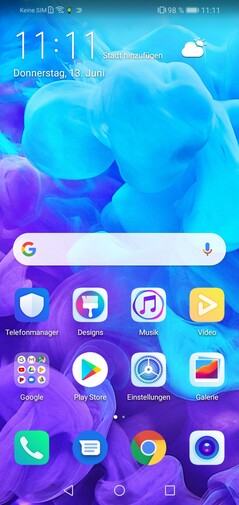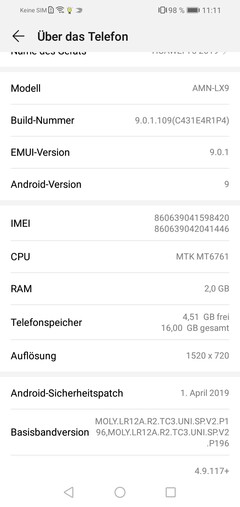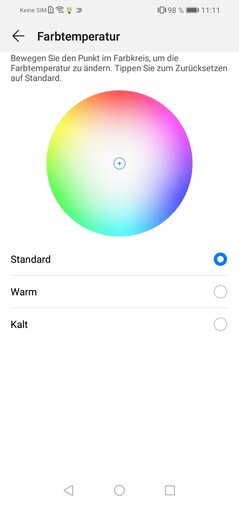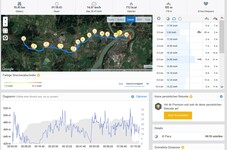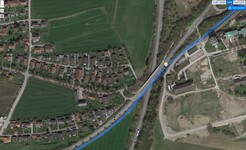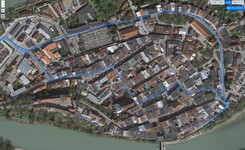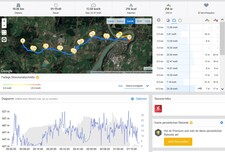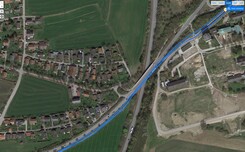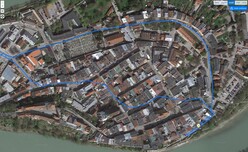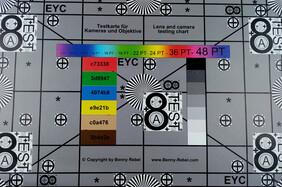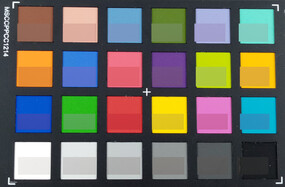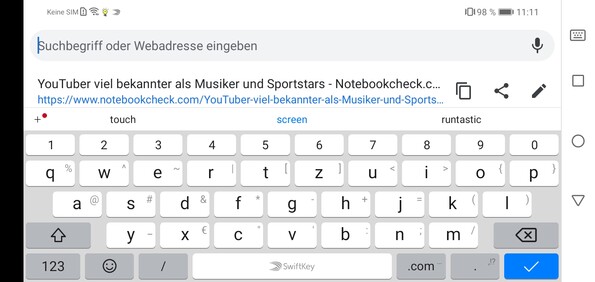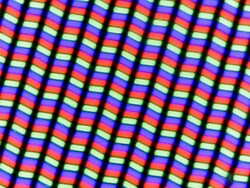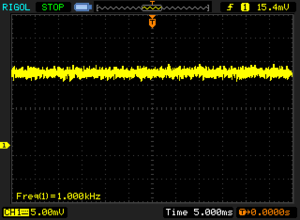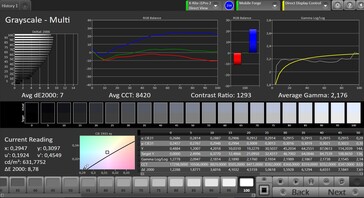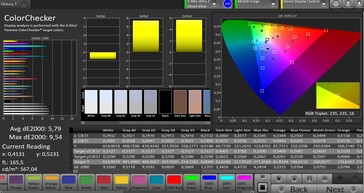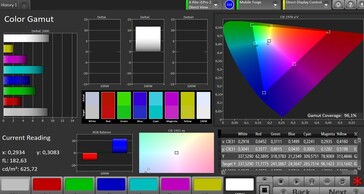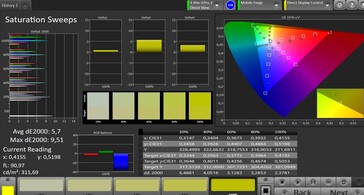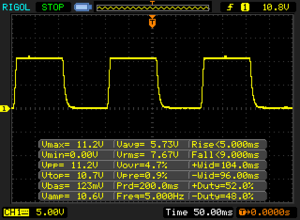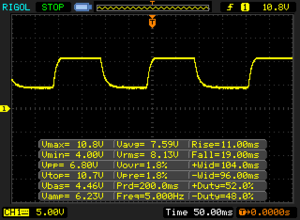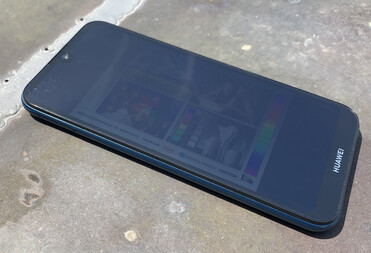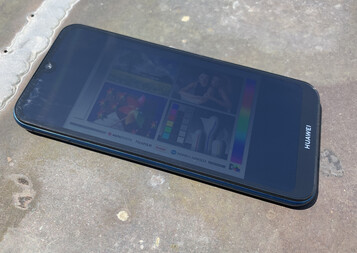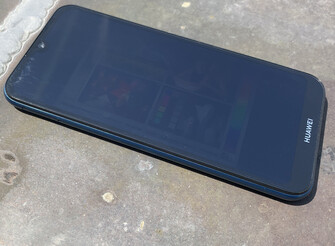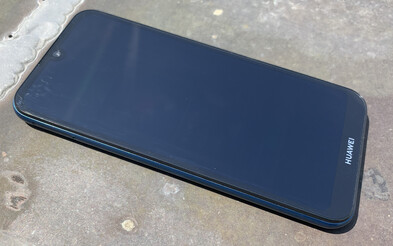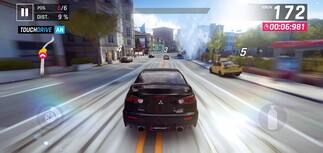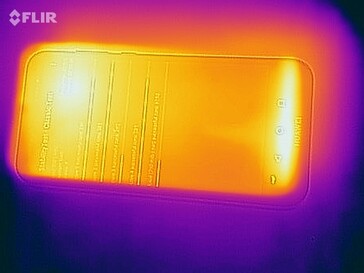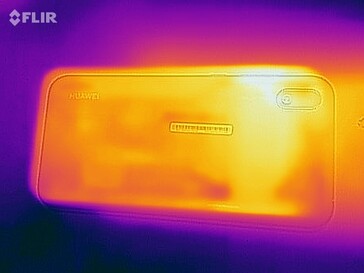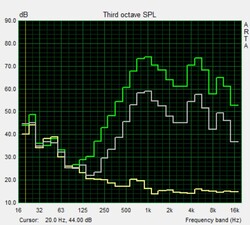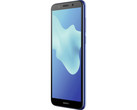Huawei Y5 2019 Smartphone Review: Better than last year
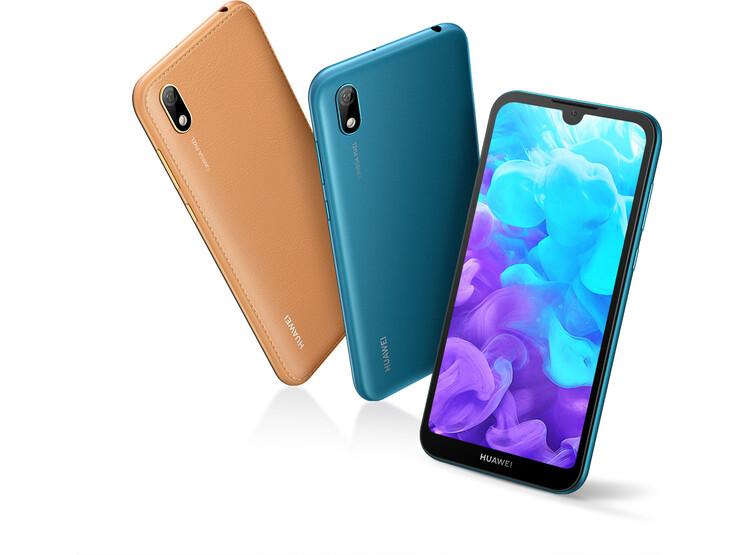
Huawei is not only able to create absolute top smartphones like the P30 Pro, but it also offers some good deals in the lower price ranges. For years, the Y-series has been one of its sales hits, and this year as well, the Huawei Y6 (2019) and the Huawei Y7 (2019) achieved good results in our tests. For several years, the predecessors of the Huawei Y5 (2019) that we are testing now have been the smallest and most affordable smartphones of the Y-series that are available in the West. For other countries, there is the even more affordable Huawei Y3.
What can you expect from a smartphone for about 120 Euros (~$135)? Surely no wonders, but Huawei has managed to offer acceptable cameras and a fairly modern design with the Huawei Y5 2018. In addition, there is a colorful exterior that stands out from the gray smartphone crowd.
There are also other smartphones that fight for the affection of buyers who have to guard their purse. For example, the Nokia 2.1 or the BQ Aquaris C are within the same price range as our test unit, and there are also the more affordable Moto E5 Play or the slightly more expensive Xiaomi Redmi 7. Let's see, where the Huawei Y5 2019 places in this test field.
Case – A smartphone with a faux-leather back
As with the Y6 2019, Huawei again offers a daring design for its affordable smartphones, and in addition to the classic black or blue-green plastic back, there is also a finish with a faux-leather look that is available either in light brown or black (Modern Black). While your expectations on the haptics should not be too high, this daring look is at least a change from the crowd of uniform smartphones.
According to the manufacturer, the Huawei Y5 2019 weighs exactly one gram more than its predecessor, which makes it a still fairly light entry-level smartphone. The compact size is less suited for those who love large screens, but this makes it more suited for users with small hands. The classic back surface of our test unit is matte, has a slight shimmer, and is not sensitive to fingerprints. Overall, it appears as modest as its predecessor.
Strong pressure on the front or back of the case is transmitted to the screen, becoming apparent as waves forming in the liquid crystal. Otherwise, the Huawei Y5 2019 offers a fairly robust build, can hardly be warped, and does not creak either.
Equipment – Small internal storage in the Y5
While the Huawei Y5 2019 is equipped fairly well with 2 GB of RAM, the 16 GB of storage are unfortunately the standard in this price class. If you count the operating system, there are only between 10 and 11 GB that remain for apps and storage of your own data. Nowadays, this is not very much. At least, those who like to record many pictures and videos can store them on a microSD card, which as in the predecessor has its own slot and does not occupy one of the dual-SIM slots.
Apps cannot be moved to the storage card, which can only be formatted as external storage. However, you can use the ExFAT file system, which is supported by the Huawei Y5 2019.
Software – Huawei's own software is preinstalled
Huawei has preinstalled Android 9 with its own EMUI 9 on top, which changes the looks and adds several options. We were unable to find a dark mode. The security patches come from the beginning of April 2019, so to ensure the security of users, Huawei should offer an update soon.
There are several preinstalled advertising apps, but fortunately they can be uninstalled without any trouble. In addition, there are several apps by Huawei that allow you to change the design of the user interface or offer tips for using the smartphones, for example.
Unfortunately, the device is not Widevine DRM certified, so that you can only watch the streaming contents from the large providers in SD.
Communication and GPS – WLAN is quite fast, GPS is okay
Except for the very fast 802.11-ac band, all the current WLAN standards are supported and the device can also use the 5-GHz net. In our test with the Linksys EA8500 reference router, the WLAN speed is faster than that of its predecessor and also very stable. Among the affordable smartphones, the Huawei Y5 2019 is even one of the fastest, while the BQ Aquaris C shows the advantages of the ac standard and is clearly ahead.
Near the router, we get full reception, but you still have to wait for several seconds for images when scrolling. At a 10-meter (~33 feet) distance and through three walls, there is still 3/4 of the reception. Pages load at similar speeds as near the router.
| Networking | |
| iperf3 transmit AX12 | |
| BQ Aquaris C | |
| Motorola Moto E5 Play | |
| Huawei Y5 2019 | |
| Xiaomi Redmi 7 | |
| Nokia 2.1 | |
| Huawei Y5 2018 | |
| iperf3 receive AX12 | |
| BQ Aquaris C | |
| Huawei Y5 2019 | |
| Motorola Moto E5 Play | |
| Huawei Y5 2018 | |
| Xiaomi Redmi 7 | |
| Nokia 2.1 | |
Indoors, the device is unable to locate us. Outdoors, the locating succeeds after a short delay and is very accurate at 3 meters (~10 feet).
In our practice test, which is a bike tour where we also take the Garmin Edge 520 professional navigation device for comparison, the Huawei Y5 2019 does an acceptable job. On the bridge, there are some small deviations that place us next to the real route, and in the old city, the smartphone likes to take some shortcuts, but overall the locating is fairly accurate. Anyone who does not need absolute precision can comfortably use the Huawei Y5 2019 as a navigation device.
Telephone Functions and Voice Quality – A positive surprise
Huawei's in-house Telephone app is preinstalled, but there are not many differences to Google's standard app and its operation is also intuitive and easy. According to the manufacturer, the smartphone supports dual-VoLTE, so you can use VoLTE and 4G via both SIM cards and even use both standards simultaneously.
The voice quality offers a positive surprise. Both the earpiece and the built-in speaker reproduce the voice fairly clearly, and while neither is excessively loud, their sound is not boomy either. The microphone also records our voice well, regardless of whether we speak with a loud or low voice, and there are no disturbing noises.
Cameras – A good camera upgrade for the Huawei smartphone
In the main camera, Huawei raised the ante significantly compared to the Y5 2018. There is now a 13-Megapixel lens that is more light sensitive than the predecessor and also has phase comparison autofocus. Under normal light conditions, it really succeeds in producing some acceptable pictures, and particularly the image sharpness is convincing. However, there is also a slight blue tint and there are fewer details in dark image areas than with more expensive smartphones.
Generally, the light sensitivity is the biggest problem of the built-in single camera, and higher-quality smartphone cameras have a significant advantage here. The sky in the picture of the surroundings also offers less visible details. In weak light conditions, the details become blurry, but the brightness itself is okay.
Videos can be recorded in 1080p at 30 fps. The exposure reacts in visible steps to changes in the brightness and colors could be more vibrant, but otherwise the video quality is also okay.
In the front camera, nothing has changed. There are still 5 Megapixels and it still struggles with strong image noise, even in fairly good light conditions. While the front camera is sufficient for a quick selfie, those who want high-quality selfies should look for another smartphone.
In our photo lab with controlled light conditions, the Huawei Y5 2019 also shows a slight blue tint with its main camera, and the enlargement has visible artifacts in larger areas. The image sharpness is good. There are some slight problems with black text on a red background, and the contrast could also be higher. The sharpness decreases visibly towards the edges.
Generally, the color reproduction is slightly too bright, and you can also see artifacts in the color areas.
Accessories and Warranty – The usual is included in the box
In addition to the charger and the USB cable, the box also includes a headset, and of course there is also a SIM tool to open the tray. We did not find any dedicated accessories for the Y5 2019 on Huawei's website.
The manufacturer offers a 24-month warranty for the smartphone, but only 3 to 6 months on the included accessories.
Input Devices and Operation – No fingerprint sensor
While there are also some smartphones in this price range that offer fingerprint sensors, such as the BQ Aquaris C, the Huawei Y5 is again not one of them in 2019. Instead, Huawei uses unlocking via face recognition. This works quite fast and reliably, and you cannot trick it with a simple photo. However, you should still be careful, since people who look similar might be able to unlock the device with their face. Huawei gives a specific notification on this.
Basically, you can navigate the menu quickly and smoothly. Only when very demanding apps are in the background, the system can begin to stutter. The touchscreen is also sensitive in the corners and can be easily operated. Its smooth surface offers a slight resistance to the sliding finger. The keys are on the right side of the case and can be easily felt by the finger, but their quality does not feel particularly high.
Display – Brighter, but with a blue tint
The display of the Huawei Y5 2019 has a resolution of 1520x720 pixels and at up to 630 cd/m², it can become quite bright if necessary. At 88%, the brightness distribution is fairly even. The resolution is at the level of the price class, the Motorola Moto E5 Play offers fewer pixels.
| |||||||||||||||||||||||||
Brightness Distribution: 88 %
Center on Battery: 630 cd/m²
Contrast: 955:1 (Black: 0.66 cd/m²)
ΔE ColorChecker Calman: 5.79 | ∀{0.5-29.43 Ø4.78}
ΔE Greyscale Calman: 7 | ∀{0.09-98 Ø5}
96.1% sRGB (Calman 2D)
Gamma: 2.176
CCT: 8420 K
| Huawei Y5 2019 IPS, 1520x720, 5.7" | Huawei Y5 2018 IPS, 1440x720, 5.5" | Nokia 2.1 IPS, 1280x720, 5.5" | BQ Aquaris C IPS, 1440x720, 5.5" | Xiaomi Redmi 7 IPS, 1520x720, 6.3" | Motorola Moto E5 Play IPS, 960x480, 5.2" | |
|---|---|---|---|---|---|---|
| Screen | -40% | 1% | 12% | 9% | -35% | |
| Brightness middle (cd/m²) | 630 | 475 -25% | 338 -46% | 623 -1% | 444 -30% | 369 -41% |
| Brightness (cd/m²) | 593 | 470 -21% | 327 -45% | 608 3% | 441 -26% | 358 -40% |
| Brightness Distribution (%) | 88 | 91 3% | 82 -7% | 91 3% | 90 2% | 81 -8% |
| Black Level * (cd/m²) | 0.66 | 0.76 -15% | 0.27 59% | 0.61 8% | 0.45 32% | 0.4 39% |
| Contrast (:1) | 955 | 625 -35% | 1252 31% | 1021 7% | 987 3% | 923 -3% |
| Colorchecker dE 2000 * | 5.79 | 9.12 -58% | 5.36 7% | 4.5 22% | 3.94 32% | 9.75 -68% |
| Colorchecker dE 2000 max. * | 9.54 | 18.86 -98% | 9.77 -2% | 7.33 23% | 6.72 30% | 18.28 -92% |
| Greyscale dE 2000 * | 7 | 12 -71% | 6.2 11% | 4.8 31% | 4.8 31% | 11.8 -69% |
| Gamma | 2.176 101% | 2.342 94% | 2.345 94% | 2.596 85% | 2.294 96% | 2.057 107% |
| CCT | 8420 77% | 9861 66% | 8460 77% | 7557 86% | 7445 87% | 11971 54% |
| Color Space (Percent of sRGB) (%) | 78.6 |
* ... smaller is better
Screen Flickering / PWM (Pulse-Width Modulation)
| Screen flickering / PWM detected | 1000 Hz | ≤ 10 % brightness setting | |
The display backlight flickers at 1000 Hz (worst case, e.g., utilizing PWM) Flickering detected at a brightness setting of 10 % and below. There should be no flickering or PWM above this brightness setting. The frequency of 1000 Hz is quite high, so most users sensitive to PWM should not notice any flickering. In comparison: 53 % of all tested devices do not use PWM to dim the display. If PWM was detected, an average of 8108 (minimum: 5 - maximum: 343500) Hz was measured. | |||
At a black value of 0.66 cd/m², black areas shine fairly bright at maximum brightness levels, making them appear rather gray. While this limits the impression of the contrast, 955:1 is still an acceptable value, which is due to the high brightness. Subjectively, the colors do not appear very vibrant. The white balance can be adjusted to your liking.
Our measurements with the CalMAN software and the spectral photometer reveal a considerable blue tint. The deviations of the color and grayscale reproduction are at an average level for the price range, and the BQ Aquaris C or the Xiaomi Redmi 7 offer a significantly more exact reproduction here.
We measure PWM at 1000 Hz, which is a fairly high frequency that might only lead to problems for users who are very sensitive. In addition, the PWM is only used at very low brightness levels.
Display Response Times
| ↔ Response Time Black to White | ||
|---|---|---|
| 14 ms ... rise ↗ and fall ↘ combined | ↗ 5 ms rise | |
| ↘ 9 ms fall | ||
| The screen shows good response rates in our tests, but may be too slow for competitive gamers. In comparison, all tested devices range from 0.1 (minimum) to 240 (maximum) ms. » 33 % of all devices are better. This means that the measured response time is better than the average of all tested devices (20.2 ms). | ||
| ↔ Response Time 50% Grey to 80% Grey | ||
| 30 ms ... rise ↗ and fall ↘ combined | ↗ 11 ms rise | |
| ↘ 19 ms fall | ||
| The screen shows slow response rates in our tests and will be unsatisfactory for gamers. In comparison, all tested devices range from 0.165 (minimum) to 636 (maximum) ms. » 39 % of all devices are better. This means that the measured response time is similar to the average of all tested devices (31.6 ms). | ||
Outdoors, the smartphone can only be used with the sensor at maximum brightness in bright surroundings. The viewing angles are very good. From any angle, you can see an image almost without any distortion.
Performance – A fast SoC in the Huawei smartphone
With the Mediatek Helio A22 MT6761, the Huawei Y5 2019 neither uses an SoC from Qualcomm, nor a HiSilicon developed in-house. However, it does well with this choice, and the performance increase compared to last-year's Huawei Y5 is considerable, a good 20 to 30%. Other devices of this price range have a hard time keeping up with this, and only the Xiaomi Redmi 7 with a mid-range SoC has a significant advantage here.
In terms of the 3D performance, our test unit also does not need too hide, leaving most of the other similarly-priced smartphones in the dust.
| PCMark for Android | |
| Work performance score (sort by value) | |
| Huawei Y5 2019 | |
| Huawei Y5 2018 | |
| Nokia 2.1 | |
| BQ Aquaris C | |
| Xiaomi Redmi 7 | |
| Motorola Moto E5 Play | |
| Average Mediatek Helio A22 MT6761 (4229 - 7216, n=9) | |
| Work 2.0 performance score (sort by value) | |
| Huawei Y5 2019 | |
| Huawei Y5 2018 | |
| Nokia 2.1 | |
| BQ Aquaris C | |
| Xiaomi Redmi 7 | |
| Motorola Moto E5 Play | |
| Average Mediatek Helio A22 MT6761 (4195 - 5511, n=11) | |
| GFXBench 3.1 | |
| on screen Manhattan ES 3.1 Onscreen (sort by value) | |
| Huawei Y5 2019 | |
| Huawei Y5 2018 | |
| Nokia 2.1 | |
| Xiaomi Redmi 7 | |
| Motorola Moto E5 Play | |
| Average Mediatek Helio A22 MT6761 (7.6 - 11, n=7) | |
| Average of class Smartphone (11 - 166, n=157, last 2 years) | |
| 1920x1080 Manhattan ES 3.1 Offscreen (sort by value) | |
| Huawei Y5 2019 | |
| Huawei Y5 2018 | |
| Nokia 2.1 | |
| Xiaomi Redmi 7 | |
| Motorola Moto E5 Play | |
| Average Mediatek Helio A22 MT6761 (2.5 - 5, n=7) | |
| Average of class Smartphone (8.4 - 413, n=156, last 2 years) | |
| AnTuTu v7 - Total Score (sort by value) | |
| Huawei Y5 2019 | |
| Huawei Y5 2018 | |
| BQ Aquaris C | |
| Xiaomi Redmi 7 | |
| Motorola Moto E5 Play | |
| Average Mediatek Helio A22 MT6761 (63421 - 65996, n=5) | |
The browser performance of the Huawei smartphone is slightly faster than many other devices in the class comparison, but still significantly slower than the Xiaomi Redmi 7. In everyday use, you might have to wait for pictures to load at times, and the speed is average overall. Demanding HMTL-5 pages such as Google's Interland run with some smaller stutters but otherwise mostly smoothly.
| Jetstream 2 - 2.0 Total Score | |
| Average of class Smartphone (23.8 - 387, n=149, last 2 years) | |
| Xiaomi Redmi 7 (Chrome 73) | |
| Average Mediatek Helio A22 MT6761 (13.4 - 20.3, n=6) | |
| Huawei Y5 2019 (Chrome 74) | |
| Speedometer 2.0 - Result 2.0 | |
| Average of class Smartphone (15.2 - 643, n=122, last 2 years) | |
| Xiaomi Redmi 7 (Chome 73) | |
| Huawei Y5 2019 (Chome 74) | |
| Average Mediatek Helio A22 MT6761 (12.5 - 15.7, n=5) | |
| WebXPRT 3 - Overall | |
| Average of class Smartphone (38 - 380, n=31, last 2 years) | |
| Xiaomi Redmi 7 (Chrome 73) | |
| Huawei Y5 2019 (Chrome 74) | |
| Average Mediatek Helio A22 MT6761 (30 - 39, n=6) | |
| Octane V2 - Total Score | |
| Average of class Smartphone (2228 - 121337, n=197, last 2 years) | |
| Xiaomi Redmi 7 (Chrome 73) | |
| Huawei Y5 2019 (Chrome 74) | |
| Average Mediatek Helio A22 MT6761 (3920 - 5041, n=8) | |
| BQ Aquaris C (Chrome 70) | |
| Huawei Y5 2018 (Chrome 67) | |
| Nokia 2.1 (Chrome 70) | |
| Motorola Moto E5 Play | |
| Mozilla Kraken 1.1 - Total | |
| Huawei Y5 2018 (Chrome 67) | |
| Nokia 2.1 (Chrome 70) | |
| Motorola Moto E5 Play | |
| BQ Aquaris C (Chrome 70) | |
| Average Mediatek Helio A22 MT6761 (9310 - 12215, n=6) | |
| Huawei Y5 2019 (Chrome 74) | |
| Xiaomi Redmi 7 (Chrome 73) | |
| Average of class Smartphone (257 - 28190, n=154, last 2 years) | |
* ... smaller is better
The eMMC storage delivers the expected results at the same level as the competitors. But at least compared to the predecessor, the internal storage is slightly faster. During the reading and writing of our Toshiba Exceria Pro M501 reference microSD card, it also achieves the usual values.
| Huawei Y5 2019 | Huawei Y5 2018 | Nokia 2.1 | BQ Aquaris C | Xiaomi Redmi 7 | Motorola Moto E5 Play | Average 16 GB eMMC Flash | Average of class Smartphone | |
|---|---|---|---|---|---|---|---|---|
| AndroBench 3-5 | -9% | -0% | -11% | 22% | 28% | -36% | 1895% | |
| Sequential Read 256KB (MB/s) | 272.1 | 245.3 -10% | 288.3 6% | 275.9 1% | 298 10% | 279 3% | 164.5 ? -40% | 2228 ? 719% |
| Sequential Write 256KB (MB/s) | 45.2 | 47.8 6% | 51.2 13% | 45.7 1% | 84.7 87% | 52.2 15% | 43 ? -5% | 1852 ? 3997% |
| Random Read 4KB (MB/s) | 62.1 | 39 -37% | 50.5 -19% | 39.1 -37% | 73.6 19% | 46.31 -25% | 21.7 ? -65% | 296 ? 377% |
| Random Write 4KB (MB/s) | 13.1 | 11.8 -10% | 13.45 3% | 9.8 -25% | 14.4 10% | 43.16 229% | 8.08 ? -38% | 339 ? 2488% |
| Sequential Read 256KB SDCard (MB/s) | 81.8 ? | 81.7 ? 0% | 79.4 ? -3% | 83 ? 1% | 85.9 ? 5% | 83.7 ? 2% | 59.1 ? -28% | |
| Sequential Write 256KB SDCard (MB/s) | 63.1 ? | 62.3 ? -1% | 61.9 ? -2% | 59.2 ? -6% | 63.3 ? 0% | 28.83 ? -54% | 39.8 ? -37% |
Games – Gaming with limitations
Gaming on the Huawei Y5 2019 is a mixed bag: On one hand, you can play simple games such as "Angry Birds 2" without any trouble, and even more demanding games such as "Arena of Valor" run fairly smoothly, even if there are some drops in the frame rates at high details.
On the other hand, things look different in "Asphalt 9," the fast racing game: The GameBench app finds frame rates around only 8 - 9 fps here, meaning that the game stutters strongly. So for those who like to play more demanding games, the Xiaomi Redmi 7 might be more suitable since it can offer a game that is at least fairly free from stutters.
Using "Temple Run 2," we evaluate whether the operation of the touchscreen and position sensor are accurate enough to control the game and are able to confirm this.
Emissions – Better speakers than in the predecessor
Temperature
At a maximum of 41.2 °C (106 °F), the surface temperatures remain within limits. During idle operation, only the area of the SoC on top around the display notch becomes slightly warm, but otherwise the device remains very cool.
As we find out with the battery test of GFXBench, the SoC does not throttle even under extended load.
(±) The maximum temperature on the upper side is 41.2 °C / 106 F, compared to the average of 35.2 °C / 95 F, ranging from 21.9 to 247 °C for the class Smartphone.
(+) The bottom heats up to a maximum of 37.2 °C / 99 F, compared to the average of 34 °C / 93 F
(+) In idle usage, the average temperature for the upper side is 29.2 °C / 85 F, compared to the device average of 32.9 °C / 91 F.
Speaker
After our attempt last year to use the earpiece as a speaker, which was considered poor, the Huawei Y5 2019 brings a dedicated mono speaker at the bottom of the case again. If needed, this can become significantly louder than the hybrid speaker in the Huawei Y5 2018 and can also produce slightly more lower mids. However, overall the sound spectrum has not changed much, and the sound emphasizes the highs too much, so that listening does not really become a pleasure. At medium volume levels, the sound is acceptable but is not extremely present either.
The included headset is not very comfortable to wear in our ears but produces an acceptable sound. Those who want to connect a different headset can do this either via the 3.5-mm port or via Bluetooth 5.0, which both work without any problems.
Huawei Y5 2019 audio analysis
(±) | speaker loudness is average but good (81.1 dB)
Bass 100 - 315 Hz
(-) | nearly no bass - on average 64.4% lower than median
(+) | bass is linear (0% delta to prev. frequency)
Mids 400 - 2000 Hz
(-) | nearly no mids - on average 64.4% lower than median
(+) | mids are linear (0% delta to prev. frequency)
Highs 2 - 16 kHz
(-) | nearly no highs - on average 64.4% lower than median
(+) | highs are linear (0% delta to prev. frequency)
Overall 100 - 16.000 Hz
(-) | overall sound is not linear (125.6% difference to median)
Compared to same class
» 96% of all tested devices in this class were better, 4% similar, 1% worse
» The best had a delta of 11%, average was 35%, worst was 134%
Compared to all devices tested
» 99% of all tested devices were better, 1% similar, 0% worse
» The best had a delta of 4%, average was 24%, worst was 134%
Huawei Y5 2018 audio analysis
(-) | not very loud speakers (63.6 dB)
Bass 100 - 315 Hz
(-) | nearly no bass - on average 21.8% lower than median
(+) | bass is linear (6.2% delta to prev. frequency)
Mids 400 - 2000 Hz
(±) | higher mids - on average 6% higher than median
(±) | linearity of mids is average (11.9% delta to prev. frequency)
Highs 2 - 16 kHz
(+) | balanced highs - only 3.4% away from median
(+) | highs are linear (5.9% delta to prev. frequency)
Overall 100 - 16.000 Hz
(±) | linearity of overall sound is average (27.8% difference to median)
Compared to same class
» 72% of all tested devices in this class were better, 5% similar, 23% worse
» The best had a delta of 11%, average was 35%, worst was 134%
Compared to all devices tested
» 84% of all tested devices were better, 3% similar, 13% worse
» The best had a delta of 4%, average was 24%, worst was 134%
Battery Life – The Huawei Y5 2019 lasts for a long time
Power Consumption
The power consumption turns out significantly more frugal than in the Huawei Y5 2018. However, if you look at the comparison devices, the Huawei Y5 2019 is not particularly energy efficient. The values under load are much better than the values in idle operation.
| Off / Standby | |
| Idle | |
| Load |
|
Key:
min: | |
| Huawei Y5 2019 3020 mAh | Huawei Y5 2018 3020 mAh | Nokia 2.1 4000 mAh | BQ Aquaris C 3000 mAh | Xiaomi Redmi 7 4000 mAh | Motorola Moto E5 Play 2120 mAh | Average Mediatek Helio A22 MT6761 | Average of class Smartphone | |
|---|---|---|---|---|---|---|---|---|
| Power Consumption | -23% | 20% | 0% | 4% | 5% | 11% | -35% | |
| Idle Minimum * (Watt) | 1.2 | 1.3 -8% | 0.7 42% | 0.7 42% | 1 17% | 1.2 -0% | 0.881 ? 27% | 0.842 ? 30% |
| Idle Average * (Watt) | 1.9 | 1.7 11% | 1.2 37% | 1.9 -0% | 1.7 11% | 1.6 16% | 1.864 ? 2% | 1.439 ? 24% |
| Idle Maximum * (Watt) | 2.4 | 2.5 -4% | 1.9 21% | 2.5 -4% | 2.1 12% | 2 17% | 2.13 ? 11% | 1.624 ? 32% |
| Load Average * (Watt) | 3.3 | 5.5 -67% | 3.2 3% | 4.1 -24% | 3.3 -0% | 3.6 -9% | 3.1 ? 6% | 7.03 ? -113% |
| Load Maximum * (Watt) | 4.6 | 6.8 -48% | 4.8 -4% | 5.2 -13% | 5.6 -22% | 4.5 2% | 4.12 ? 10% | 11.3 ? -146% |
* ... smaller is better
Battery Life
The battery has the same capacity as that of the predecessor: Huawei offers a capacity of 3020 mAh. While this is no record in this class, it is a good average.
With 11:49 hours in our WLAN test, the smartphone lasts a few minutes longer than its predecessor and also offers good runtimes overall. It clearly beats the Aquaris C or the Moto E5 Play and should last for two days of normal usage without a recharge.
The device, which does not offer quick-charging capabilities, takes its time to recharge, and you should expect two hours at least, when your battery is completely empty.
| Huawei Y5 2019 3020 mAh | Huawei Y5 2018 3020 mAh | Nokia 2.1 4000 mAh | BQ Aquaris C 3000 mAh | Xiaomi Redmi 7 4000 mAh | Motorola Moto E5 Play 2120 mAh | |
|---|---|---|---|---|---|---|
| Battery runtime | -3% | 14% | -18% | 17% | -46% | |
| Reader / Idle (h) | 20.9 | 24.8 19% | ||||
| H.264 (h) | 12.2 | 15 23% | ||||
| WiFi v1.3 (h) | 11.8 | 11.4 -3% | 13.5 14% | 9.7 -18% | 14.1 19% | 6.4 -46% |
| Load (h) | 4.2 | 4.5 7% |
Pros
Cons
Verdict – Many improvements
The Huawei Y5 2019 is a good update compared to the Y5 2018 and offers several advantages. For one, we should mention the higher system performance, then there is the more modern design with a waterdrop notch, and there is also the dedicated speaker which, although offering a mediocre sound, is still better than its predecessor. The display has a more accurate color reproduction and can also become brighter than that of the predecessor, if needed.
Huawei would have done itself and their customers a favor by adding a fingerprint sensor, but on the other hand, at 13 Megapixels, the camera now offers a fairly high resolution in the class comparison and it can also take acceptable pictures.
The Huawei Y5 2019: A good budget smartphone with a lot of performance and significant improvement compared to its predecessor.
The Xiaomi Redmi 7 is a tough competitor, for sure. It costs barely 30 Euros (~$34) more and offers significantly more performance, a fingerprint sensor, and a longer battery life. The BQ Aquaris C offers a considerably faster WLAN and a fingerprint sensor. At the same time, the Huawei Y5 2019 has eliminated several weaknesses of its predecessor and is now a competitive budget smartphone.
Currently, the additional cost compared to the Y5 2018 is about 20 Euros (~$23). If you cannot decide between the two smartphones, the more current model is definitely the better choice.
Note: At the time of our testing, everybody is talking about the trade war between the US and China, and Huawei is particularly affected. However, the manufacturer affirms that there should be no limitations in terms of software updates or usable apps for all the models that are currently available and have been sold.
Huawei Y5 2019
- 10/31/2019 v7 (old)
Florian Schmitt




